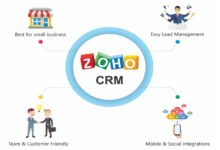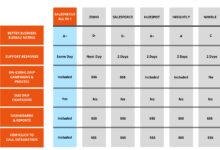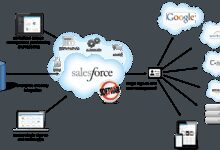Salesforce Implementation Cost: 7 Shocking Truths You Must Know
Thinking about adopting Salesforce but unsure what it’ll really cost? You’re not alone. The salesforce implementation cost can vary wildly—depending on your business size, goals, and complexity. Let’s break down the real numbers, hidden fees, and smart strategies to avoid budget blowouts.
Salesforce Implementation Cost: What’s the Real Price Tag?

When companies ask about salesforce implementation cost, they often expect a simple number. But the truth is, there’s no one-size-fits-all answer. Costs can range from $25,000 for small businesses to over $500,000 for enterprise-level deployments. The variation comes from licensing, customization, data migration, training, and ongoing support.
Licensing Fees: The Foundation of Your Budget
Licensing is often the most visible part of the salesforce implementation cost. Salesforce offers several editions—Essentials, Professional, Enterprise, and Unlimited—each with different features and price points.
- Essentials starts at $25/user/month, ideal for small teams.
- Professional is around $75/user/month, offering workflow automation.
- Enterprise jumps to $150/user/month, with full customization.
- Unlimited, at $300/user/month, includes 24/7 support and advanced analytics.
For a team of 50 users on the Enterprise edition, that’s already $90,000 annually—before implementation even begins. And if you need additional products like Sales Cloud, Service Cloud, or Marketing Cloud, costs stack up fast.
Customization and Configuration: Where Costs Multiply
Out-of-the-box Salesforce is powerful, but most businesses need it tailored to their workflows. This is where customization drives up the salesforce implementation cost. Whether it’s building custom objects, automating processes with Flow, or integrating with ERP systems, each change requires developer time.
Hourly rates for certified Salesforce consultants range from $125 to $250. A mid-level customization project can take 200–500 hours, adding $25,000 to $125,000 to your budget. Complex CRM overhauls with multiple departments involved can easily exceed $200,000.
“Customization is the biggest cost driver in Salesforce implementations. The more you want it to do, the more you’ll pay.” — Salesforce Consultant, CloudFlow Solutions
Hidden Costs in Salesforce Implementation You Can’t Ignore
Many organizations underestimate the salesforce implementation cost because they focus only on licensing and ignore the hidden expenses. These can silently inflate your budget and derail timelines if not planned for.
Data Migration: More Than Just Moving Records
Data migration is often seen as a technical task, but it’s one of the most complex and costly phases. Cleaning, mapping, and transferring data from legacy systems requires careful planning. Poor data quality can lead to duplicates, inaccuracies, and system errors post-go-live.
On average, data migration costs between $10,000 and $50,000, depending on volume and complexity. For companies with millions of records across multiple systems, this can climb higher. Tools like Jitterbit or Informatica help, but they come with licensing fees and require skilled operators.
Additionally, data governance policies must be established to maintain quality over time. Without them, your Salesforce ROI diminishes quickly.
Integration with Existing Systems
Salesforce rarely works in isolation. It needs to connect with accounting software (like QuickBooks or NetSuite), marketing platforms (like HubSpot or Mailchimp), and internal databases. Each integration adds development time and potential middleware costs.
- Simple API integrations: $5,000–$15,000
- Complex, real-time syncs with ERP systems: $25,000–$75,000+
- Middle-tier integration platforms (like MuleSoft): $50,000+ in licensing and setup
MuleSoft, Salesforce’s own integration platform, is powerful but expensive. A basic MuleSoft license starts at $100,000 annually. While it streamlines connections, it significantly impacts the total salesforce implementation cost.
Factors That Influence Salesforce Implementation Cost
Understanding what drives the salesforce implementation cost helps you plan better and avoid surprises. Several key factors determine how much you’ll spend.
Company Size and Complexity
A small business with 10 users has vastly different needs than a multinational with 5,000 employees. Larger organizations require more user licenses, complex role hierarchies, territory management, and multi-currency support—all of which increase costs.
Enterprise deployments often involve multiple Salesforce clouds (Sales, Service, Marketing, Commerce), each adding licensing and implementation layers. Governance, security, and compliance also become more demanding, requiring additional configuration and audits.
Scope of Implementation
The scope defines how much of Salesforce you’re using. A basic Sales Cloud rollout for a single team is far cheaper than a full digital transformation involving all departments.
- Narrow scope (one department): $25,000–$75,000
- Mid-range (two to three departments): $75,000–$200,000
- Enterprise-wide (full org transformation): $200,000–$1M+
Scope creep—adding features mid-project—is a common budget killer. Always define clear objectives and stick to them.
Choosing the Right Salesforce Implementation Partner
Your choice of implementation partner can make or break your project—and your budget. A skilled partner can streamline the process, while a poor one can lead to delays, rework, and inflated salesforce implementation cost.
Why Partner Expertise Matters
Not all Salesforce consultants are equal. Look for partners with:
- Salesforce Gold or Platinum Partner status
- Industry-specific experience
- Proven track record of on-time, on-budget deliveries
- Certified architects and developers
Top-tier partners like Accenture, Deloitte, or smaller boutique firms like Simplus or CloudKite charge premium rates but often deliver better ROI through efficient planning and execution.
Cost vs. Value: Cheap Isn’t Always Better
Some companies opt for offshore or low-cost consultants to save money. While this can reduce hourly rates, it often leads to:
- Poor communication and time zone challenges
- Lack of understanding of business context
- Higher error rates and rework
- Longer project timelines
In the long run, a $100K project with a premium partner might deliver more value than a $60K project that fails to meet business needs. Always evaluate partners based on total value, not just cost.
Phased vs. Big Bang Implementation: Cost Implications
How you roll out Salesforce affects both timeline and salesforce implementation cost. Two main approaches exist: phased and big bang.
Phased Implementation: Controlled and Predictable
A phased approach rolls out Salesforce in stages—starting with one department or region, then expanding. This method offers several cost advantages:
- Lower initial investment
- Better risk management
- Opportunity to learn and adjust before scaling
- Smaller training batches reduce disruption
However, it can extend the total project timeline and require more change management over time. Total cost may be slightly higher due to repeated efforts, but the financial risk is spread out.
Big Bang Implementation: Fast but Risky
In a big bang rollout, the entire organization switches to Salesforce at once. This can be appealing for speed, but it comes with significant risks:
- Higher upfront costs
- Greater strain on IT and support teams
- Potential for user resistance and low adoption
- Higher chance of system failure or data issues
If something goes wrong, the impact is organization-wide. While it may seem cost-effective in the short term, the long-term risks often outweigh the benefits.
Training and Change Management: The Overlooked Cost Factor
Many companies assume that once Salesforce is live, the job is done. But without proper training and change management, adoption fails—and your salesforce implementation cost becomes a sunk cost.
User Training: Invest to Save
Effective training ensures users understand how to use Salesforce efficiently. Poor training leads to workarounds, data entry errors, and low engagement.
- Basic end-user training: $1,000–$5,000
- Advanced admin training: $5,000–$15,000
- Custom training materials and e-learning: $10,000+
Consider using Salesforce’s Trailhead platform for self-paced learning. It’s free and highly effective when combined with live workshops.
Change Management: Driving Adoption
Change management is about more than training—it’s about culture, communication, and leadership. A dedicated change manager can help:
- Communicate the benefits of Salesforce
- Address user concerns and resistance
- Monitor adoption metrics
- Adjust strategies based on feedback
While not always seen as a direct cost, neglecting change management can lead to project failure. Budgeting $10,000–$30,000 for this role is a smart investment.
Post-Implementation Support and Ongoing Costs
The salesforce implementation cost doesn’t end at go-live. Ongoing support, maintenance, and upgrades are essential for long-term success.
Annual Maintenance and Upgrades
Salesforce releases three major updates per year. While these bring new features, they can also break customizations or integrations. Regular testing and adjustments are required.
Many companies allocate 15–20% of their initial implementation cost annually for maintenance. For a $100,000 project, that’s $15,000–$20,000 per year for support, bug fixes, and minor enhancements.
In-House vs. Outsourced Support
You can manage post-go-live support internally or outsource it. Each has cost implications:
- In-house: Requires hiring Salesforce admins ($70K–$120K/year salary)
- Outsourced: $100–$200/hour for consulting firms
- Hybrid model: Part-time admin + on-demand consultants
A hybrid approach often offers the best balance of cost and responsiveness.
How to Reduce Salesforce Implementation Cost Without Sacrificing Quality
While Salesforce is a premium platform, there are smart ways to control the salesforce implementation cost without cutting corners.
Start with a Clear Strategy and Scope
Define your business goals before writing a single requirement. Ask:
- What problems are we solving?
- Which teams need Salesforce?
- What are our must-have vs. nice-to-have features?
A clear scope prevents feature creep and keeps the project focused. Use a Salesforce implementation checklist to stay on track.
Leverage Salesforce’s Free Tools and Resources
Salesforce offers a wealth of free tools to reduce costs:
- Trailhead: Free learning platform for admins and users
- Salesforce Labs: Free apps and components from the community
- Developer Edition: Free sandbox for testing and prototyping
- AppExchange: Marketplace for pre-built solutions that reduce custom development
Using pre-built solutions from AppExchange can save thousands in development time.
Use Agile Methodology for Faster, Leaner Delivery
Agile project management breaks the implementation into sprints, allowing for faster feedback and adjustments. This reduces the risk of building the wrong thing and helps prioritize high-value features early.
Agile also promotes collaboration between business and IT teams, leading to better outcomes and lower rework costs.
What is the average salesforce implementation cost?
The average salesforce implementation cost ranges from $25,000 for small businesses to over $500,000 for large enterprises. Total cost depends on licensing, customization, data migration, integration, training, and ongoing support.
How long does a Salesforce implementation take?
Implementation timelines vary: small projects take 2–3 months, mid-sized 4–6 months, and enterprise deployments 6–12 months or more. Phased rollouts extend the timeline but reduce risk.
Can I implement Salesforce myself to save money?
While technically possible using Trailhead and free tools, self-implementation is risky for anything beyond basic setups. Lack of experience can lead to poor data models, security issues, and low adoption. For most businesses, a certified partner is worth the investment.
Does Salesforce offer implementation support?
Salesforce provides resources and guidance, but not full implementation services. They partner with consulting firms like Accenture and Deloitte for actual deployments. You can also hire Salesforce-approved partners through the Salesforce Partner Portal.
How can I reduce my salesforce implementation cost?
To reduce costs: define a clear scope, use pre-built solutions from AppExchange, leverage free Trailhead training, adopt Agile methodology, and choose the right partner. Avoid scope creep and invest in change management to ensure adoption.
Understanding the true salesforce implementation cost is critical for any business considering CRM transformation. It’s not just about software licenses—it’s about people, processes, and long-term strategy. From licensing and customization to training and ongoing support, every phase adds to the total investment. By planning carefully, choosing the right partner, and leveraging Salesforce’s free tools, you can control costs without sacrificing value. The key is to focus on ROI, not just upfront price. A well-executed Salesforce implementation can drive sales growth, improve customer service, and deliver significant returns—making every dollar spent worthwhile.
Further Reading:





